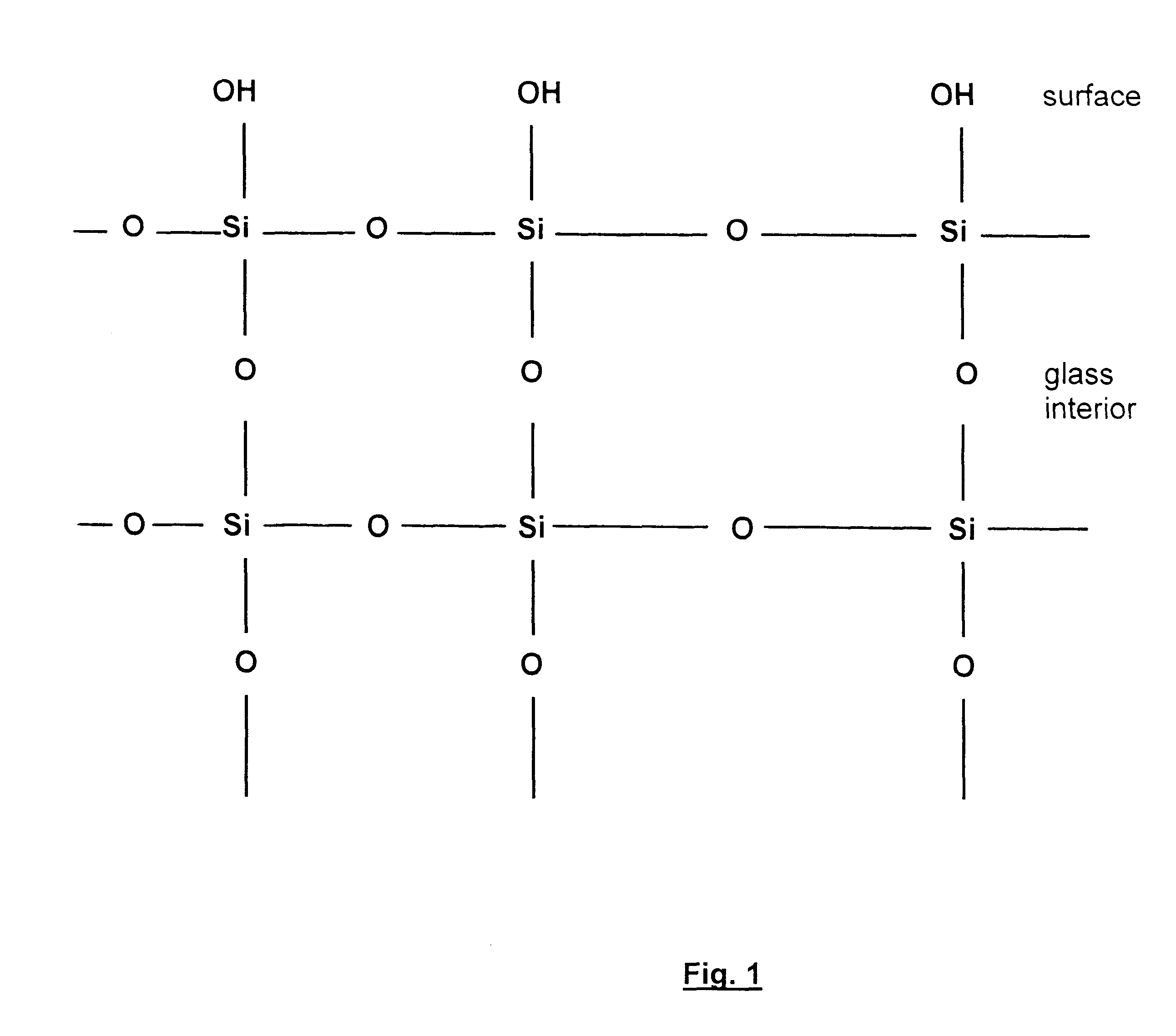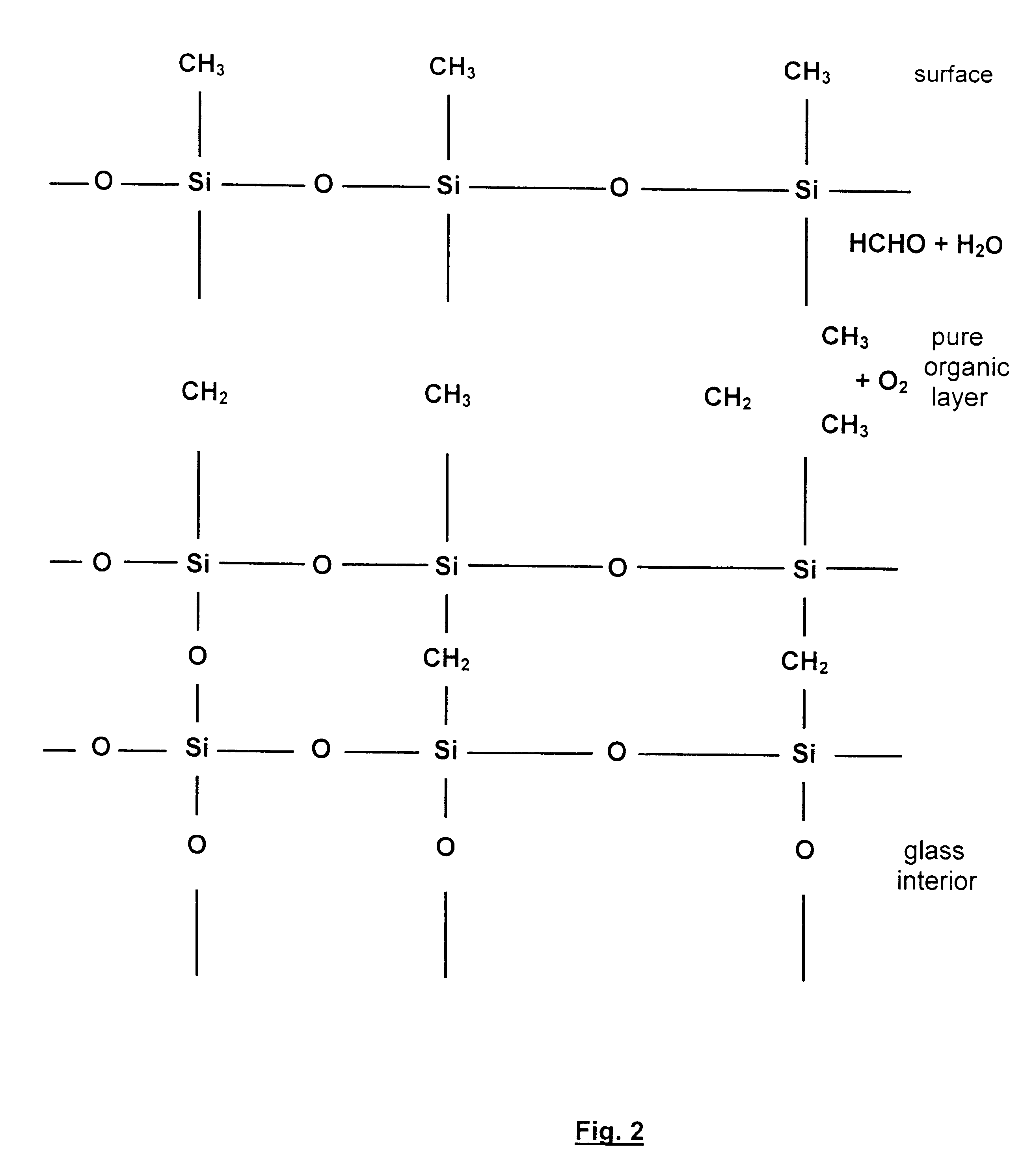Method of making a temperature and scratch resistant anti-sticking coating
a technology of anti-stick coating and temperature resistance, which is applied in the field of carrier substances, can solve the problems of significant damage, loss of favorable charateristics, and bonding agents, and achieve the effect of non-sticking and advantageous properties
- Summary
- Abstract
- Description
- Claims
- Application Information
AI Technical Summary
Problems solved by technology
Method used
Image
Examples
Embodiment Construction
In use, the properties of a surface are always defined by its final exposed coating. A surface made, i.e. modified in accordance with the invention and a method for producing a surface thus modified will hereafter be described in connection with a substrate surface similar to glass or ceramic. The description is not, however, intended to exclude the modification of other types of substrate surfaces.
FIG. 1 depicts a silicon oxygen network of a conventional glass or glass-like carrier material without coating. Typically, molecular groups similar to the OH groups shown are formed at the surface of such a carrier material. By a chemical reaction, for instance by condensation, these molecular groups may be made to react with aqueous and / or water based coatings on the surface. They also react strongly with vegetable and / or animal fats. In use this leads to the formation on the surface of strongly bonded residues which can only be removed with difficulties.
FIG. 2 depicts a network which ex...
PUM
| Property | Measurement | Unit |
|---|---|---|
| temperature | aaaaa | aaaaa |
| temperature | aaaaa | aaaaa |
| temperatures | aaaaa | aaaaa |
Abstract
Description
Claims
Application Information
 Login to View More
Login to View More - R&D
- Intellectual Property
- Life Sciences
- Materials
- Tech Scout
- Unparalleled Data Quality
- Higher Quality Content
- 60% Fewer Hallucinations
Browse by: Latest US Patents, China's latest patents, Technical Efficacy Thesaurus, Application Domain, Technology Topic, Popular Technical Reports.
© 2025 PatSnap. All rights reserved.Legal|Privacy policy|Modern Slavery Act Transparency Statement|Sitemap|About US| Contact US: help@patsnap.com



